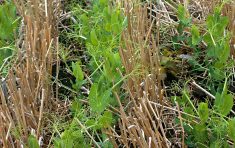MarketsFarm – Although India has prioritized producing their country’s own pulses self-sufficiently, unprecedented rainfall in October and November could turn the country back to relying on imports.
A statement from the chairman of the Indian Pulses and Grains Association (IPGA), Zaverchand Bheda, said as much as 50 per cent of the urad pulse crop was damaged due to significant rain in major growing regions, including Madhya Pradesh.
“Urad sowing fields received incessant unseasonal rainfall in October and November, resulting in waterlogging and crop damage,” he said.
Read Also

U.S. grains: Corn futures edge up, soybeans sag on improving US crop ratings
Chicago Board of Trade corn futures extended slight gains on Tuesday as short covering and bargain buying continued to support a rebound from contract lows reached during the previous session.
However, it’s unclear to what extent India will turn to other countries to fill their pulse demand.
“While India’s pulse imports are expected to jump significantly to meet the deficit, much would depend upon the government policies with opening up import beyond the quota fixed for the current year,” said Bheda.
Experts expect India’s pulse imports for the 2019-20 growing year to surpass last year’s, which totaled 2.37 million tonnes. The year prior, pulse imports were more than double at 5.37 million tonnes. The country’s annual demand for pulses is around 26 million tonnes.
So far, during the 2019-202 crop year, India has imported just 11,800 tonnes of Canadian dried peas. In 2018-19, India imported over 174,000 tonnes of Canadian dried peas.



















